
Costa Rica
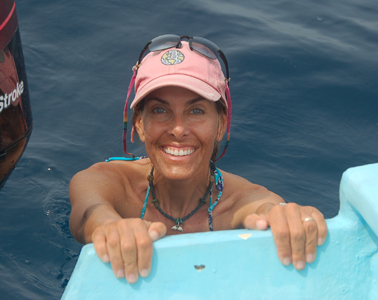
Dr. Bessesen oversees an online database of peer-reviewed articles, GolfoDulce.org, which aggregates published marine research for Costa Rica's governmental policy-makers and conservation organizations.
Since 2010, Golfo Dulce has been revealed as a biodiversity hotspot! Indeed, this rare tropical fiord has been internationally identified as an Important Marine Mammal Area (IMMA) and designated a Whale Heritage Area. In addition to serving as critical habitat for two species of dolphins and two populations of migratory humpback whales, it's a nursery for scalloped hammerhead sharks and hawksbill sea turtles, both critically endangered, as well as America's only endemic (and endangered) sea snake.
Brooke's scientific articles below are made reader-friendly with photos, media links, and related essays to help you fully understand the value of her findings. Scroll down and explore!
"Now the days float by in blues and teals and misty greys. I feel like Margaret Wise Brown's black kitten, peering from my seaward vessel in search of life's secrets. What will we find today?" —from Brooke's blog
Scientific Papers & Associated Public Articles
Brooke L. Bessesen, CV, ORCID 0000-0003-0272-3889

Protecting Xanthos' habitat will also benefit other endangered fauna inside Golfo Dulce (think: sea turtles, sharks, and corals).
Bessesen B. 2024. Costa Rica's endemic sea snake is in trouble. Current Conservation 18.3: 35–36. [link]
Link to IUCN Red List for Hydrophis platurus ssp. xanthos
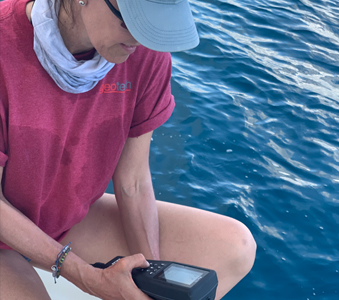
Hydrophis platurus xanthos is restricted to a unique aquatic habitat that quite a different from the open Pacific Ocean.
Bessesen BL, Garrido-Cayul C, González-Suárez M. 2023. Habitat suitability and area of occupancy defined for rare New World sea snake. Conservation Science and Practice 5(1): e12865. [link]
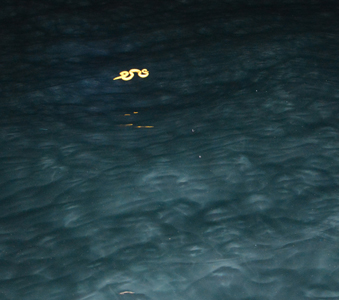
A well-established method called distance sampling was used to answer a key question How many yellow sea snakes are there? Spoiler alert: the total population is relatively small.
Bessesen BL, Oedekoven CS, Galbreath GJ, González-Suárez M. 2022. Population abundance and density estimates for Costa Rica's endemic sea snake, Hydrophis platurus xanthos. Frontiers in Marine Science 9: 924966. [link]

Around-the-clock observations of Golfo Dulce yellow sea snakes confirmed a nocturnal activity pattern, which is opposite the (diurnal) pelagic sea snakes inhabiting the open Pacific Ocean.
Bessesen BL and M González-Suárez. 2022. Safe from sunburn: The divergent diel pattern of a Hydrophis sea snake. Ecology and Evolution 12(1): e8436. [link].
Read Brooke's related article published for general readers: Dinner After Dark.
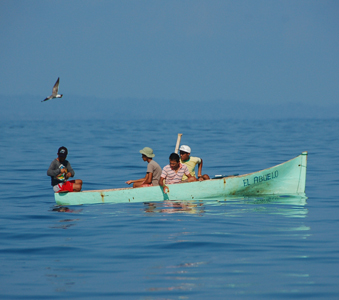
Local ecological knowledge (LEK) gained through interviews with fishermen and tour boat guides in Golfo Dulce helped us examine changes in multi-species abundance over a ten-year gap.
Bessesen BL and M González-Suárez. 2021. The value and limitations of local ecological knowledge: Longitudinal and retrospective assessment of flagship species in Golfo Dulce, Costa Rica. People and Nature 3:627–638. [link]
Read Brooke's published essay: Human knowledge can supplement vital marine studies.

Even though xanthic sea snakes are venomous and have few, if any, natural predators, they are often seen being harassed by dolphins, who toss them around like play toys.
Bessesen BL, M González-Suárez, D Herra-Miranda and L Oviedo. 2021. Hydrophis platurus xanthos (Golfo Dulce Yellow Seasnake): Harassment by dolphins. Natural History Note. Herpetological Review 52(2): 425–426. [link]

Hydrophis platurus xanthos assumes a unique sinusoidal ambush posture, which appears to have a stabilizing effect in rough water. Hanging its head allows it to access fish below the surface.
Bessesen BL and GJ Galbreath. 2017. A new subspecies of sea snake, Hydrophis platurus xanthos, from Golfo Dulce, Costa Rica. ZooKeys 686: 109—123. [link]
Read articles about xanthos in Newsweek, Science News, and The Wire.
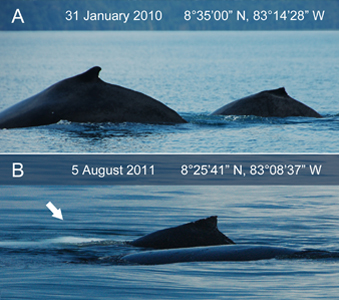
Golfo Dulce is a rare cross-over birthing ground for humpback whales from both the northern (top) and southern (bottom) hemispheres. In the bottom image, milk whitens the water as a young calf nurses.
Bessesen BL. 2015. Occurrence and distribution patterns of several marine vertebrates in Golfo Dulce, Costa Rica. Revista de Biología Tropical 63(Supl.1):261—272 [link]
Read Brooke's Blog essays: "A Humpback Whale Hotspot" and "Nature is a Mother"

Expert examination of these strange skin lesions revealed that some of Golfo Dulce's resident bottlenose dolphins suffer a chronic disease called LLD, likely related to water degradation.
Bessesen BL L Oviedo, LB Hart, D Herra-Miranda, JD Pacheco-Polanco, L Baker, G Saborío-Rodriguez, L Bermúdez-Villapol and A Acevedo-Gutiérrez. 2014. Lacaziosis-like disease among bottlenose dolphins Tursiops truncatus photographed in Golfo Dulce, Costa Rica. Diseases of Aquatic Organisms 107:173—180 [link]
Read Brooke's Blog essay: "Photo-identification of Bottlenose dolphins".

Several hundred green sea turtles (as well as critically endangered hawksbill, olive ridley's, and probably Pacific leatherback sea turtles) depend on the waters of Golfo Dulce.
Bessesen BL and G Saborío-R. 2012. Tropical fiord habitat as a year-round resting, breeding, and feeding ground for East Pacific green sea turtles (Chelonia mydas) off Costa Rica. Herpetological Review 43:539—541 [link]
Read Brooke's Blog essay: "So Many Sea Turtles".

In 2010, plotted sighting points first revealed a geographical gap between typical yellow-bellied sea snakes and an all-yellow population inhabiting the inner-basin waters of Golfo Dulce.
Bessesen BL. 2012. Geospatial and behavioral observations of a unique xanthic colony of pelagic sea snakes, Pelamis platurus, residing in Golfo Dulce, Costa Rica. Herpetological Review 43:22—26 [link]
Read Brooke's Blog essay: "Canary-colored Sea Snakes".
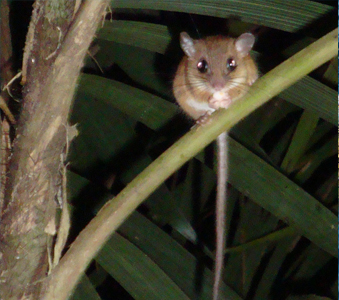
Watching hungry rodents feed in the nighttime rainforests of the Osa Peninsula expanded our scientific understanding about the diet of vesper rats.
Bessesen BL and G Saborío-R. 2009. First report of vesper rat, Nyctomys sumicrasti (Rodentia: Muridae) feeding on palm fruits. Brenesia 71/72:73—76 [link]
Read Brooke's Blog essay: "Scientific Paper in Brenesia".




